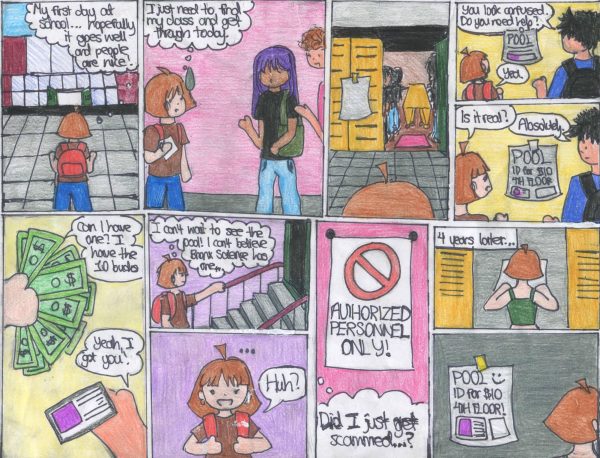Is El Niño the Cause or a Contributor to Climate Change?
Tashfia Haidar ’19 shares her thoughts on global warming and the planet.
2019 may turn out to be the hottest year in recorded human history. This is due to the eighty percent chance that another El Niño event is on its way, egged on by continuing climate change. El Niño, and its counterpart, La Niña, are the warm and cool phases of the El Niño-Southern Oscillation (ENSO) cycle. This natural cycle regulates heat in the eastern tropical Pacific Ocean and can last from a few months to a few years at a time. The last four years, 2015-2018, have been recorded to be the hottest on record. That’s why recent years have experienced more destructive weather such as wildfires, droughts, fierce storms, and heat waves. This past year, Hurricanes Harvey and Florence caused acute economic damage and extreme loss of both animal and human life. Hurricane Florence caused between $38 and $50 billion dollars in damages, while economic losses due to Hurricane Harvey could cost anything from $70 billion to $90 billion dollars.
In the years when El Niño does not occur, trade winds blow from east to west across the Pacific Ocean around the equator. These winds push warm surface water from South America west towards Asia and Australia. This causes cold water to rise up from below in the east to materialize along South America. The resulting temperature disparity across the Pacific keeps the trade winds blowing. The accumulation of warm water in the west adds heat to the air, causing it to rise and create unstable weather, which is exacerbated even further by El Niño. “If you make everything warmer, it makes more moisture, which makes any kind of weather stronger,” said Mr. Wren, A.P. Environmental Science teacher and leader of the Green Team.
The last four years, 2015-2018, have been recorded to be the hottest on record.
The impact of El Niño worsens every year due to global warming. “I think humanity needs to lessen their use of fossil fuels, stop deforestation, and recycle more. We can and should be doing more in order to save our planet,” said Moitrayee Dasgupta ’19. The list of damages from El Niño increases with each passing year. Heat waves have eliminated 153 billion hours of work, due to temperatures being too high to work or even venture outside. These hours are the sum of the amount of hours of work lost worldwide. This is three times more than the amount in the year 2000. In 2018, there were over seventy tropical storms in the Northern Hemisphere, far more than the past average of fifty-three. The most recent El Niño event ended in 2016, and has led to catastrophic destruction within the Great Barrier Reef. The rising temperatures led to thermal stress, causing mass coral bleaching. This El Niño event is also associated with severe droughts in South America, parts of the Pacific and Southeast Asia, and Africa.
While El Niño brings cooler weather to the southern United States, such as the Arctic cold front currently hitting the south, it brings dry winter conditions like heat and drought to the other side of the hemisphere. Eastern Australia is battling a heatwave of over 111 degrees Fahrenheit that has led to catastrophic wildfires along the coast.
The combined impacts of El Niño and La Niña are exacerbated every year by human contribution to global warming. “Human induced global warming and climate change is such a huge threat. We need to reduce this so that we can assure the Earth’s sustainability,” said Tashfia Haidar ’19. As the people who inhabit the planet, there’s not a lot we can do to prevent events of nature such as the El Niño-Southern Oscillation (ENSO) cycle from happening. However, we certainly can work to reduce our negative impact that we have left on our home.
Anisa Persaud is a Senior Staff Reporter for ‘The Science Survey’ and an Editor-in-Chief for ‘The Observatory.’ Anisa admires journalism and believes...











